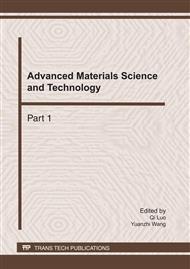p.372
p.377
p.383
p.389
p.395
p.401
p.406
p.410
p.416
Design on a Small Sprinkler Irrigation System for Saving Water Effectively
Abstract:
In this paper, design on a small and high-efficiency sprinkler irrigation system is put forward to make it more effective in saving water after it is argued how the humidity of soil effects the growth of the plant. This system is designed to control the opening of valves to achieve the target of saving much more water based on the measurement of soil humidity. After having a discussion on the method of control, design on the hardware and the software has been finished. This new system could be used in the garden or the lawn, where the irrigation area is relatively small. In addition, this system could also be useful in the irrigation of the greenhouse.
Info:
Periodical:
Pages:
395-400
Citation:
Online since:
January 2011
Authors:
Price:
Сopyright:
© 2011 Trans Tech Publications Ltd. All Rights Reserved
Share:
Citation:


